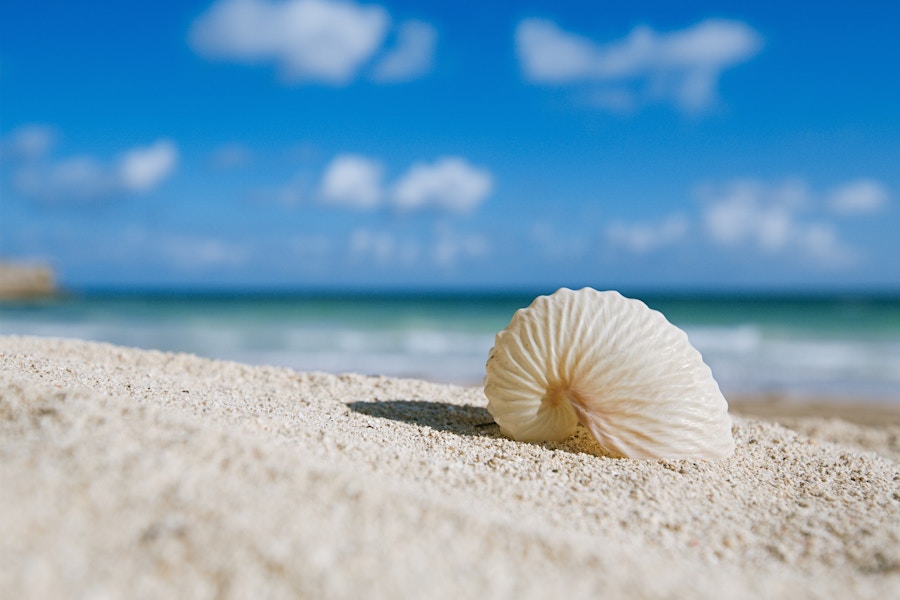Introductory Note:
Anne Morrow Lindbergh was wife to Charles Lindbergh. Always in the spotlight, the couple became the object of much media attention when their firstborn son was kidnapped and later found dead. Devastated by the tragedy, Anne spent a month in solitude on an island on the Atlantic shore in search of clarity and peace. Her published book, A Gift from the Sea, conveys the rich insights she received in her meditations on the movement of the sea. The following excerpt, from the Spiritual Classics, invites us to frame our own joys, losses and sorrows in the light of God’s gracious rhythm.
Miriam Dixon
The Silent Beach, the Bowl of Stars
Relationship is not strangled by claims. Intimacy is tempered by lightness of touch. We have moved through our day like dancers, not needing to touch more than lightly because we were instinctively moving to the same rhythm.
A good relationship has a pattern like a dance and is built on some of the same rules. The partners do not need to hold on tightly, because they move confidently in the same pattern, intricate but gay and swift and free, like a country dance of Mozart’s. To touch heavily would be to arrest the pattern and freeze the movement, to check the endlessly changing beauty of its unfolding. There is no place here for the possessive clutch, the clinging arm, the heavy hand; only the barest touch in passing. Now arm in arm, now face to face, now back to back — it does not matter which. Because they know they are partners moving to the same rhythm, creating a pattern together, and being invisibly nourished by it.
The joy of such a pattern is not only the joy of creation or the joy of participation, it is also the joy of living in the moment. Lightness of touch and living in the moment are intertwined.
When the heart is flooded with love
But how does one learn this technique of the dance? Why is it so difficult? What makes us hesitate and stumble? It is fear, I think, that makes one cling nostalgically to the last moment or clutch greedily toward the next.… But how to exorcize it? It can only be exorcized by its opposite, love. When the heart is flooded with love there is no room in it for fear, for doubt, for hesitation. And it is this lack of fear that makes for the dance. When each partner loves so completely that he has forgotten to ask himself whether or not he is loved in return; when he only knows that he loves and is moving to its music — then, and then only, are two people able to dance perfectly in tune to the same rhythm.
But is this all to the relationship of the argonauta — this private pattern of two dancers perfectly in time? Should they not also be in tune with a larger rhythm, a natural swinging of the pendulum between sharing and solitude; between the intimate and the abstract; between the particular and the universal, the near and the far? And is it not the swinging of the pendulum between these opposite poles that makes a relationship nourishing? Yeats once said that the supreme experience of life was “to share profound thought and then to touch.” But it takes both.
Separating and uniting
First touch, intimate touch of the personal and particular (the chores in the kitchen, the talk by the fire); then the loss of intimacy in the great stream of the impersonal and abstract (the silent beach, the bowl of stars overhead). Both partners are lost in a common sea of the universal which absorbs and yet frees, which separates and yet unites. Is this not what the more mature relationship, the meeting of two solitudes, is meant to be? The double-sunrise stage was only intimate and personal. The oyster bed was caught in the particular and the functional. But the argonauta, should they not be able to swing from the intimate and the particular and the functional out into the abstract and the universal, and then back to the personal again?
And in this image of the pendulum swinging in easy rhythm between opposite poles, is there not a clue to the problem of relationships as a whole? Is there not here even a hint of an understanding and an acceptance of the winged life of relationships, of their eternal ebb and flow, of their inevitable intermittency?
The ebb and flow of life
When you love someone you do not love them all the time, in exactly the same way, from moment to moment. It is an impossibility. It is even a lie to pretend to. And yet this is exactly what most of us demand. We have so little faith in the ebb and flow of life, of love, of relationships. We leap at the flow of the tide and resist in terror its ebb. We are afraid it will never return. We insist on permanency, on duration, on continuity; when the only continuity possible, in life as in love, is in growth, in fluidity — in freedom, in the sense that the dancers are free, barely touching as they pass, but partners in the same pattern.
The only real security is not in owning or possessing, not in demanding or expecting, not in hoping, even. Security in a relationship lies neither in looking back to what it was in nostalgia, nor forward to what it might be in dread or anticipation, but living in the present relationship and accepting it as it is now. For relationships, too, must be like islands. One must accept them for what they are here and now, within their limits — islands, surrounded and interrupted by the sea, continually visited and abandoned by the tides.
The most important thing
How can one learn to live through the ebb-tides of one’s existence? How can one learn to take the trough of the wave? It is easier to understand here on the beach, where the breathlessly still ebb-tides reveal another life below the level which mortals usually reach. In this crystalline moment of suspense, one has a sudden revelation of the secret kingdom at the bottom of the sea. Here in the shallow flats one finds, wading through warm ripples, great horse-conchs pivoting on a leg; white sand dollars, marble medallions engraved in the mud; and log myriads of bright- colored cochina-clams, glistening in the foam, their shells opening and shutting like butterflies’ wings. So beautiful is the still hour of the sea’s withdrawal, as beautiful as the sea’s return when the encroaching waves pound up the beach, pressing to reach those dark rumpled chains of seaweed which mark the last high tide.
Perhaps this is the most important thing for me to take back from beach-living: simply the memory that each cycle of the tide is valid; each cycle of the wave is valid; each cycle of a relationship is valid. And my shells? I can sweep them all into my pocket. They are only there to remind me that the sea recedes and returns eternally.
Read Mimi Dixons’s personal reflection on this piece.
Excerpts taken from Spiritual Classics: Selected Readings on the Twelve Spiritual Disciplines (Richard Foster and Emilie Griffin, Editors. Harpercollins, 2000.)


